An explanation of what I'm doing here can be found in my introduction post.
Last week, we ran through the February 1996 Saturn releases of Street Fighter Alpha: Warrior's Dream, Cyberia, The Horde, Clockwork Knight 2, Defcon 5, College Slam, and Johnny Bazookatone.
Also last week, we considered what happened with the 3DO and Jaguar in 1993.
This time we're continuing through the multiplatform hellscape with Winning Post, Revolution X, D, Criticom, Battle Arena Toshinden Remix, Magic Carpet, Night Warriors: Darkstalkers' Revenge, and Congo: The Movie: The Lost City of Zinj.
**This post is also featured on my site, fifthgengaming.blog, and can be found here.**
----------------------------------------------------------------------------------------------------

Winning Post
Developer: Koei
Publisher: Koei
Release Date: 3/1/1996
Time to Losing My Shirt On The Pony Races: 23 Minutes
Just when I thought I had escaped Koei strategy games, Winning Post horse-kicks me from behind. Fortunately for me, this is the only entry in this moderately prolific series of Horse Management games to get any release outside of Japan. As far as I can tell, this specific game is the localization of the 1995 32-bit modernization of the first game in the series, which came out for PC-98 computers in early '93. In only one glance, you can immediately surmise that this thing could have run on a Super Famicom, which it did. We're not dealing with anything particularly incredible with this package, other than the fact it came out in North America at all.
After only a few minutes, it became very apparent that Winning Post is running off the basic strategy framework which Koei used throughout the early 90's. This is the same type of thing that we saw in Romance of the Three Kingdoms IV: Wall of Fire. I have already expressed my stubborn insistence to not learn the correct way to play Koei Strategy games, and I'm not changing that here. Navigating through the various menus and submenus takes like five million years on a controller and ain't no one got time for that.
Anyhow, I went through the very involved character creation process and named my first two horses. The word list is large enough that you can do all kinds of dumb stuff with the horse names. After getting my horses Blue Dragon and Vagrant Story sorted out, I hired a grumpy looking stable manager who told me he would make decisions for the horses until I had a certain number of experience points. Mildly dumbfounded, I got kicked to the main screen, from which something like 80% of the gameplay is performed. I can appreciate Koei's commitment to the mundane business aesthetic, but I realized how far over my head I was at this point. Everything I know about horse racing comes from Pocket Card Jockey, so I'm pretty much lost without the solitaire. There's a massive jargon dictionary buried in one of the menus, but I was starting to develop a headache by the time I found it.
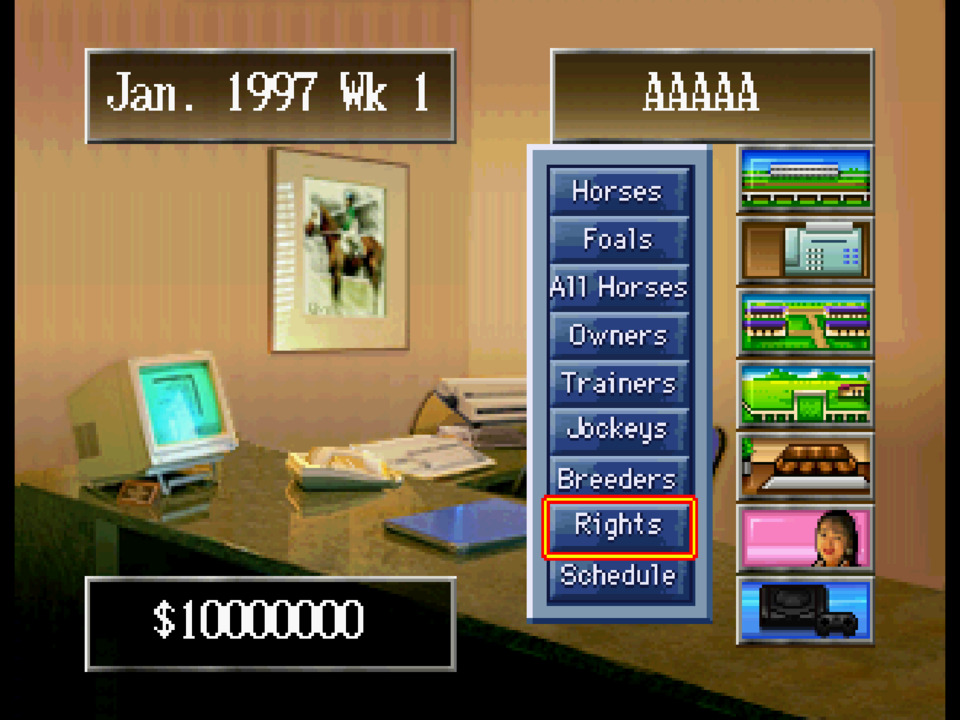
I guess it's fortunate that the game wasn't letting me mess around with the horses, but that meant there wasn't anything to do but progress time. It seems like the game is broken out by week, with a business phase taking place during the workweek and horse racing happening during the weekend. You go to the races whether your horses are there or not, and it seems that all you can do in that situation is bet on the ponies. You can get all the way into the weeds of examining each horse's status, recent performances, and predictions from different analysts. Without having any clue what I should take into consideration, I bet $1000 on a horse, which then proceeded to come in third. I have no notion how horse racing payouts are structured or basically anything else. After that it was the start of a new week and I was well and truly checked out of the whole experience.
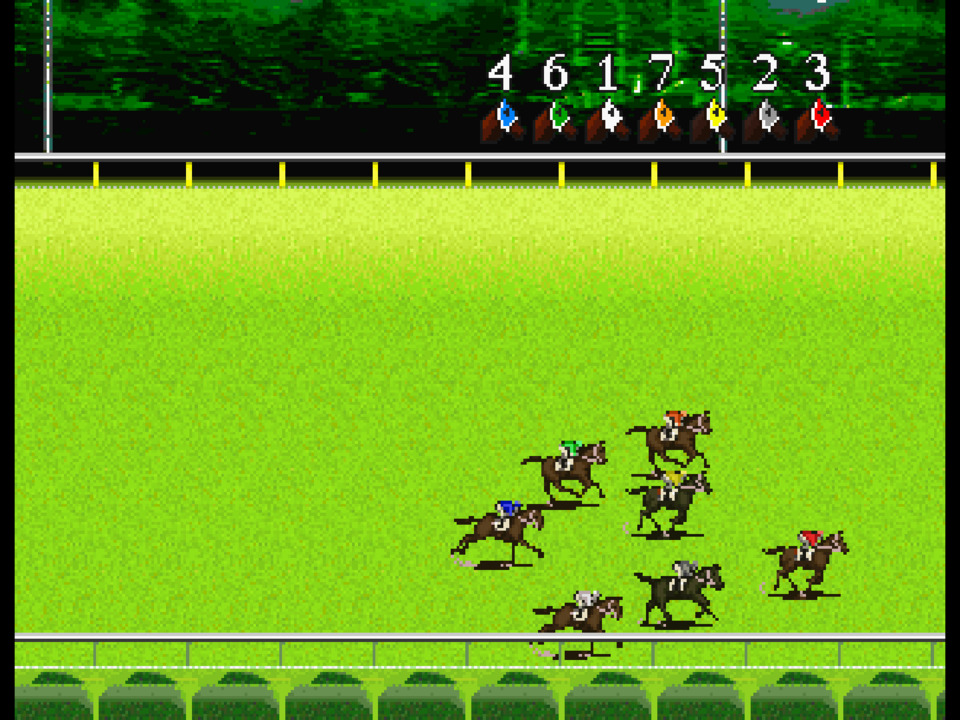
The biggest reason I tapped out as quickly as I did was because something about the graphics in this game was giving me a headache. I got a little bit of that from Wall of Fire, but not to this extent. Something about Koei's 16-bit engine being upscaled to a 32-bit platform and then emulated on a flatscreen monitor didn't mix well. Though, I wouldn't have gotten much more out of it I had put in another hour or more. You're either the audience for a Horse Management game, in which case you already live in Japan, or you're not. It should be telling that there has never been any attempt after this to again bring the Winning Post series to western markets. This is an odd curiosity on a system full of odd curiosities.
----------------------------------------------------------------------------------------------------

Revolution X
Developer: Software Creations
Publisher: Acclaim Entertainment
Release Date: 3/4/1996
Time to Remembering To Mind Floss Twice A Day: 35 Minutes
We last encountered this game in Part 015 of our PS1 series and for this version, I have both good and bad news. The good news is that this is still the same Revolution X that we saw on the PS1, so we don't need to dwell on it for too long. The bad news is that it's still Revolution X and I had to play it again. I guess that last point is only bad for me, but whatever.
Being almost identical to the PS1 version, I can tell you that the aiming is still bad, and the levels are still poorly designed. I did take this opportunity to play the level that I skipped last time, the Amazon Forest level. Hoo boy, that section is somehow more weirdly racist than I thought. The dual usage of African tribesman caricatures for the enemies and Mayan looking ruins for the locations betrays what has to be an intentional, if not malicious, disregard for basic human geography. Combining the level briefing from Joe Perry where he just states, "these guys are maggots, they're putting chemicals in all our food" with the fact that the trees catch on fire when you unavoidably shoot them and the aforementioned racist imagery, you get a thematically incoherent mess that is just as toxic as the boss of that level. That's just one sixth of the game. The whole thing is screwed in a way that squares too well with what Gen X guys have become over the last decade. Let's forget this game happened.
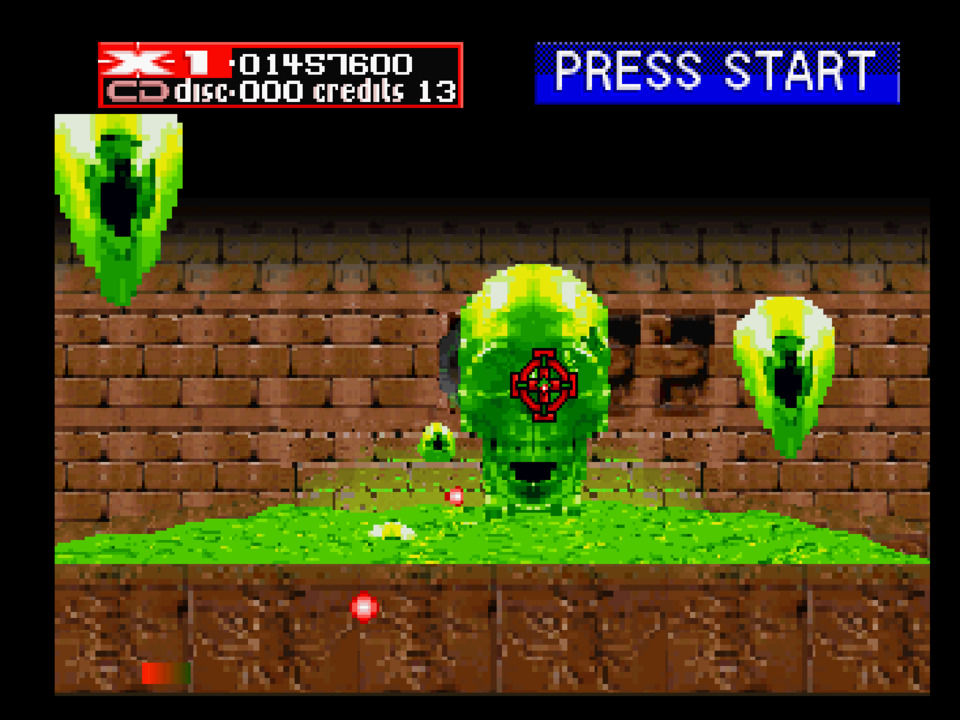
----------------------------------------------------------------------------------------------------
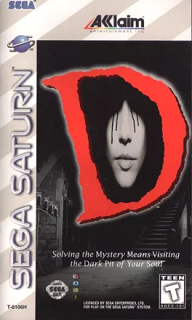
D
Developer: WARP
Publisher: Acclaim Entertainment
Release Date: 3/5/1996
Time to Shooting My Dad: 107 Minutes*
When we last saw D in Part 016 of the PS1 series, our journey through the game was cut short by, let's say, technical issues. In that write-up I promised to complete the game at some point. Ladies and gentlemen, I am proud to announce that I have beaten the Saturn version of this game with only 13 minutes to spare on the clock. As such, I can now state at a greater than 95% confidence level that this is a video game.
D is a story about a woman, Laura, who casually walks into the fresh scene of her father's mass shooting rampage only to be sucked into an enigmatic pocket dimension. That pocket dimension takes the form of a Spooky Torture Castle™ which contains no other living thing. Even though it isn't communicated to the player, Laura has two hours to find her father by slowly walking from room to room and solving basic adventure game puzzles. Every couple of rooms, the liquid-simulation face from The Abyss appears and tells her to leave, even though she literally can't. Other than one annoying Quick Time Event sequence, the only danger to Laura is the time limit. If you don't beat the game quickly enough, you get a bad ending and have to start over.
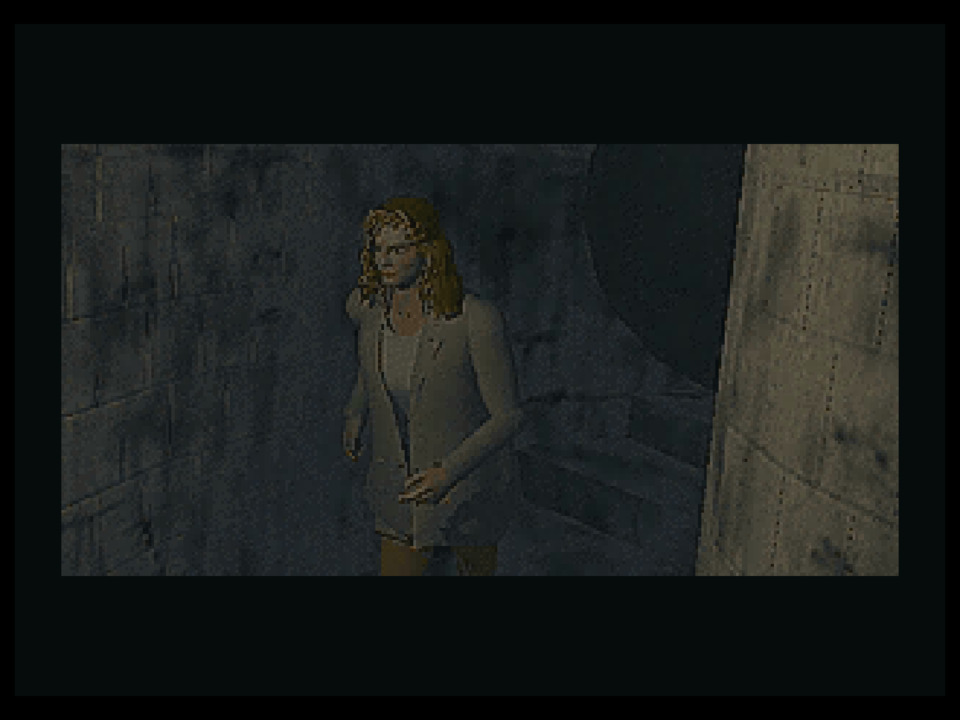
During the journey, you can encounter four glowbugs that cause Laura to remember pieces of a repressed memory in which she murdered and cannibalized her mother. First-person stabbing scenes are always uncomfortable to sit through, but otherwise these memories are campy as hell. The acid trip screen effects don't help make them any more serious or horrifying. Anyway, Laura eventually reaches her father, who reveals himself to be the reincarnation of Dracula, and that she inherited some of his Drac juice or something. Apparently, the only time she gave into that vampiric nature was during the whole mother cannibalism incident, which she had later repressed in order to bottle up her vampiness. Regardless, her father now needs to devour her so that he can finish transforming into the vampire lord. You could let him do so in order to get a bad ending, or you can shoot him with a gun you found earlier and put him down for the good ending. I should note that Laura is a silent protagonist through this whole ordeal.
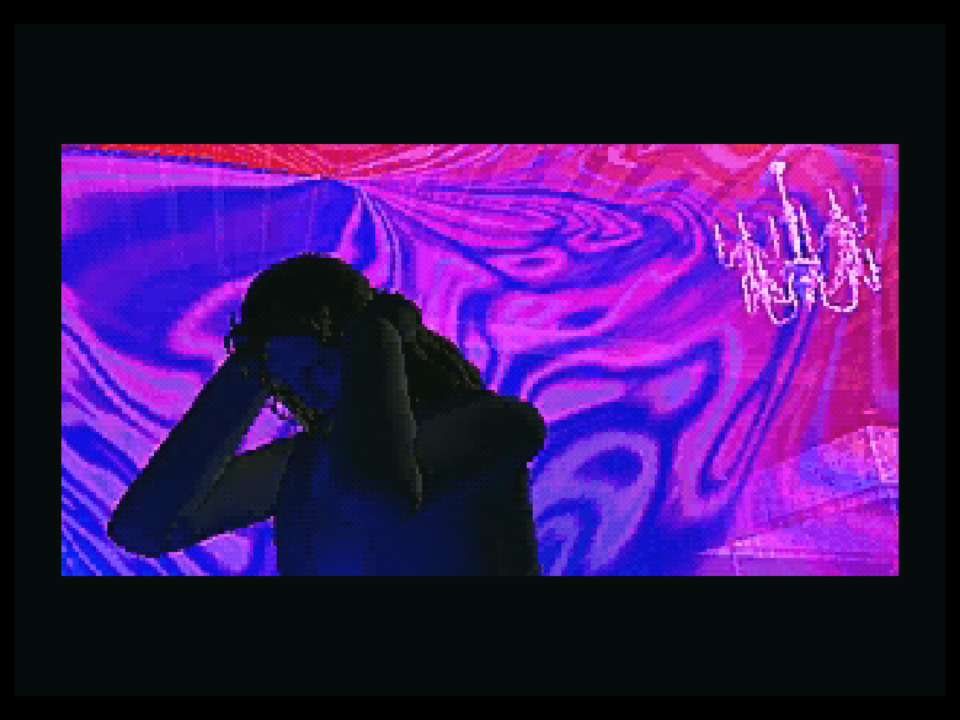
Overall, D is kind of a chore to play. This is largely due to the ponderous movement speed, but also the sparse and lifeless nature of the game environments. This is a fully 3D game where the pre-rendered polygonal models are rendered as 3D objects instead of 2D images like in Myst, Resident Evil or later games. This approach requires what would have been a ton of ROM for the time, which is why this thing uses multiple discs. Even then, there are only something like 14 or 15 areas in this game, with an area defined as a section separated from others by a load. This game does a good job of hiding the loads behind transition cutscenes and animations, but you can still tell they're there. What you get is a very small experience shown at the highest visual capability available in 1995. It's also an intentionally weird experience. There's a lot to be said about the gonzo auteurship of Kenji Eno and what this game was even trying to do. Those musings and a detailed breakdown of D's game design have already been done by ZombiePie in his blog that you should read.
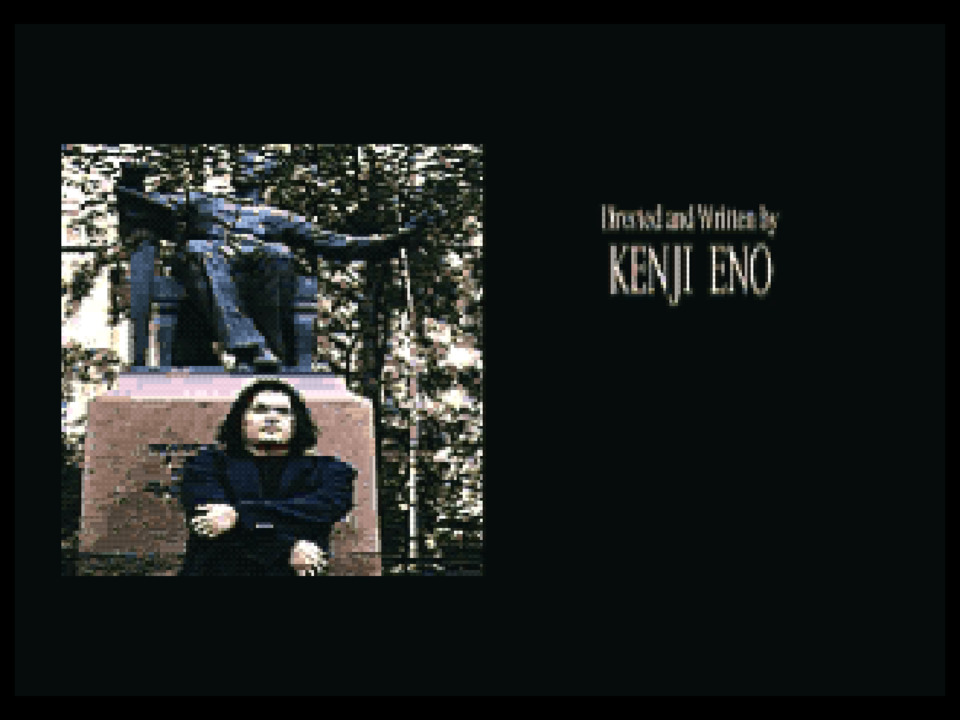
I don't have much to add on top of ZP's analysis, other than something that I've noticed from the games I've played for this project. There's an interesting comparison to make about Western and Japanese horror games in the mid 90's. Both sides of the Pacific spent the three or so years before Resident Evil iterating off the two seminal Horror Adventure games from '92 and '93, Alone in the Dark and 7th Guest. The interesting thing is, Western developers took more cues from 7th Guest while Japanese developers took more inspiration from Alone in the Dark.
My reference points for Western games are Horror Adventure titles like the Phantasmagoria series and weird crap like Harvester. Those kinds of games seem to have been based on conclusions drawn from 7th Guest, namely that computer graphics were not yet advanced enough to properly convey horror stories and that live action FMV was the way to go. Conversely, Japanese developers seem to have reached the conclusion that it was possible to be spooky scary with polygonal graphics and wound up making haunted house games in the vein of Alone in the Dark. My references here are the Mansion of Hidden Souls games, D, and eventually Resident Evil. Now, RE is also a direct spiritual successor to the Famicom Horror RPG, Sweet Home. That game also involved a haunted house setting, which may have influenced part of the preference towards Alone in the Dark. There's a lot more to dig into with the temporary divergence in Horror game design during this time period. I say temporary, because FMV Horror died out real quick and the Japanese style of Survival Horror would become the global standard until the early 2010's, but that's outside our scope. It's more interesting to think about than this game, though.
----------------------------------------------------------------------------------------------------
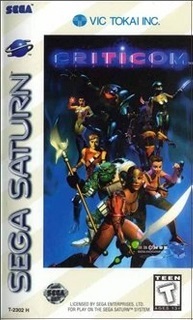
Criticom
Developer: Kronos Digital Entertainment
Publisher: Vic Tokai
Release Date: 3/26/1996
Time to Shoving Them All Off The Ledge: 24 Minutes
Even though I last touched this game all the way back in Part 009 of the PS1 series, I remembered enough of the experience to feel tangible dread going into this one. Fortunately(?), the extra four months between the PS1 and Saturn releases of Criticom was enough to partially unfuck some of the more fucked parts of the game. Don't get me wrong, this is still one of the worst 3D fighting games to ever hit store shelves, but now it's been tweaked enough to be exploitable, and thus funny.
The main difference to the singleplayer AI is that it's been slightly dialed down to be less aggressive. The AI also now blocks something like 10% less often, which moves it to only 90% of the time. These tweaks don't do anything to make it a good fighting game, the movement is still irrevocably borked and you ain't gonna do any damage to the opposing lifebar. Yet, the changes are enough to make it relatively easy to shove your opponent off the edge of the stage. Because each fight lasts only one round, you have 99 seconds to get a single ring-out in order to move on. The main point here is that there is significant slide back that happens to characters when they guard a hit. Because the AI is guarding almost every hit and isn't hyper-aggressive, you can wail fast attacks to push them towards the edge. The CPU fighter of course doesn't want to go off the edge, so you end up needing to play a little bit of grab-ass to get them over.
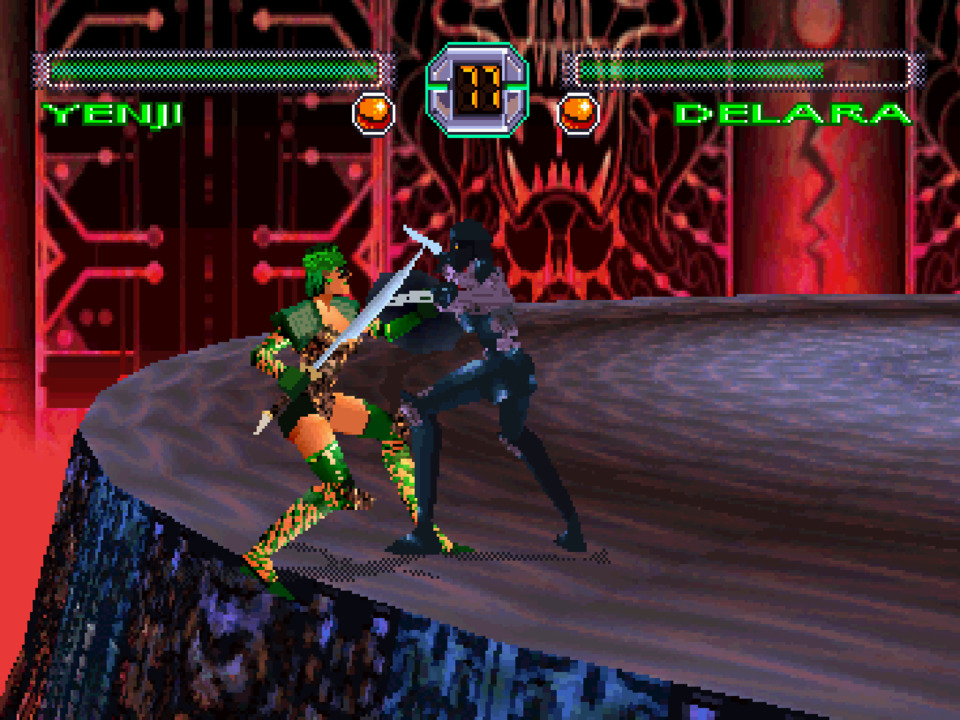
I got about a third of the way through the significant and repetitive ladder before I got bored, and in that time I got my opponents off the edge in all kinds of ways. Other than straight pushing, you can trick the Ai into siderolling off the edge, you can dodge a charge attack that sends your opponent off the edge, you can knock them prone allowing their recovery animation to send them off, and you can even get yourself prone in such way that their coup de grace move against you sends them off the edge. I even got a draw once by sending the AI and myself over the side at the same time. I was of course giggling with every ring-out, and I kinda had a good time goofing on this piece of crap. As a game, I cannot recommend anything about it. It plays terribly, it's ugly, sounds bad, and the overwrought lore is boring. There are a few touch-ups between this version and the PS1 original, but those don't amount to much. I was able to process my previous trauma using this version, but there's no reason for anyone else to play it.
----------------------------------------------------------------------------------------------------
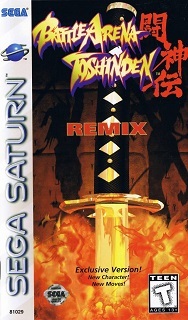
Battle Arena Toshinden Remix
Developer: Tamsoft
Publisher: Sega
Release Date: 3/27/1996
Time to Seeing Credits Twice: 45 Minutes
Speaking of processing trauma, it's time to revisit the second ever game that I looked at for these blogs, and the first game to inflict any meaningful pain. This is the game that kickstarted the Weapons Fighter subgenre and achieved success by being the only 3D Fighting game on the PS1 for its first two months. It also sucked rotten ass to try and play. So, seven months later and another word stuck at the end of the title, is this thing still as miserable? No, but Tamsoft also found new and exciting ways to be terrible.
The biggest change to note in this version is the inclusion of a story mode. For anyone who cares about the lore of Toshinden, that alone makes this the definitive version of the originalgame. For the rest of us, this mode gives us the chance to see literally any personality from the otherwise mostly forgettable characters. This mode takes us through a normal fight ladder, but with little interludes between fights where the characters talk to each other. No one says anything particularly interesting, unless you count the monumentally terrible writing and voice acting. It's hard to describe just how badly the English language VO comes across. Because Toshinden does the fighting game thing of having all its characters come from different nationalities, the voice director decided that it needed to be super obvious to players what the character nationalities are from the voices alone. I made the mistake of playing through as the not-Ryu guy, Eiji. The first time he opened his mouth nearly floored me. I keep a Mickey Rooney reference loaded in the chamber precisely for these situations, and I almost fired it off. That is until I heard the knight guy, Duke, talk with the most cartoonishly French accent possible. Turns out all these characters are offensive in their own way. Between Sofia here and Krazy Ivan on the PS1, I think I'm going to have to keep track of the Worst Russian Accent Of 1996 as a category.
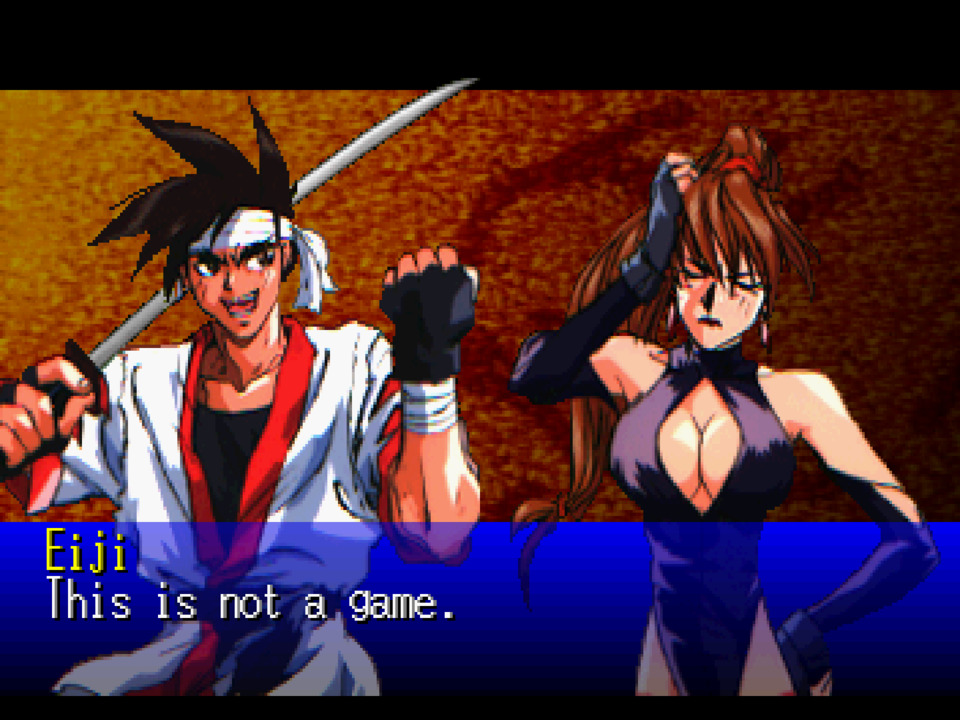
None of that is even getting into the character art that was created for the dialogue scenes and character select screen. I personally don't think it's very good, which makes this game a useful counterpoint to Virtua Fighter Remix. That VF Remix comparison is something that this game openly invites, so feel free to make it. Otherwise, this version of Toshinden adds a new hidden character that I don't particularly care about. The important part is that the fighting engine has been cleaned up a bit, making this fundamentally more playable than the original. Also, the difficulty settings have more of an effect here, which is always appreciated. Finally, it's pretty obvious that the Saturn can't quite keep up with the 3D graphics of the Playstation. This is easiest to see with the transparency effects on Ellis, AKA Sexualized Child™, which makes that character design even more cursed.
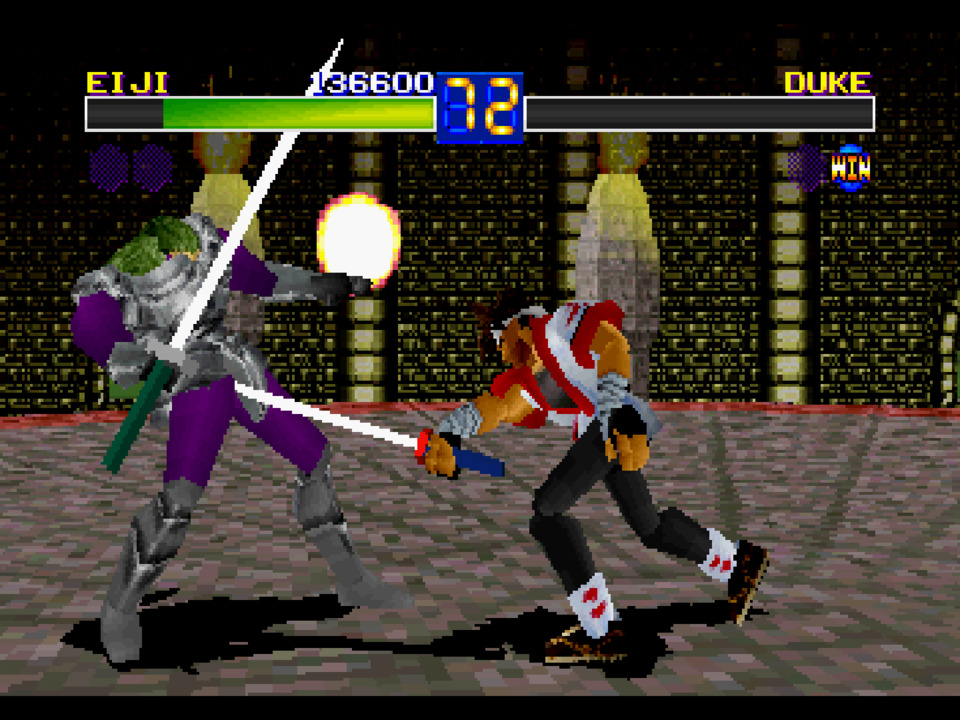
This isn't an unqualified improvement over the original release, but it's either better or more interesting in enough ways to make it the preferred version. I feel uncomfortable writing that because this is still a bad Fighting game that I wouldn't recommend. Like Criticom, the Saturn release is the best version of a game that I hate.
----------------------------------------------------------------------------------------------------

Magic Carpet
Developer: Krisalis Software
Publisher: Electronic Arts
Release Date: 3/28/1996
Time to Going On A Magic Carpet Ride: 20 Minutes
This is still this game. The Saturn version is largely indistinguishable from the contemporary PS1 release. The only thing to note is that they somehow found a way to implement the worst Flight control scheme I've ever seen, which is something, I guess. I don't feel like going into details because I have nothing but contempt for this experience. Anyway, I was reminded of a much better Magic Carpet the last time this game came up, so here's Steppenwolf:
----------------------------------------------------------------------------------------------------
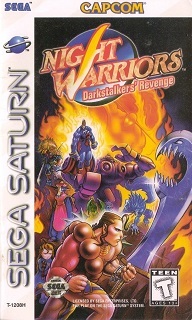
Night Warriors: Darkstalkers' Revenge
Developer: Capcom
Publisher: Capcom
Release Date: 3/29/1996
Time to Bye Felicia: 32 Minutes
Now that we're at our last fighting game of March, I'm finally out of excuses for being bad at these things. When looking at poor or mediocre Fighting games, i.e. most of them, I can point to that lack of quality without addressing my own basic ineptitude. Yet, when it comes to the good ones, Virtua Fighter, Tekken, or Street Fighter, I have to struggle with the fact that I can't engage with anything beyond the most surface level aspects of the gameplay. Now, we get to add Darkstalkers to that list.
For its own sake, this game is actually the second game in the Darkstalkers series and thus a bit more involved than the original would be. My understanding of the series going in is that it's kinda-not-really Street Fighter but with movie monsters. That reduction gets us most of the way there, as some of the characters don't fit into the Universal Monsters mold. This is also by extension a much wackier and more fantastical game than Street Fighter. That has an effect on the flow of gameplay in addition to the expected graphical flourishes, since the combos and special moves don't have even the limited constraints on physical reality found in the Street Fighter games. Even though Ryu can throw fireballs, he's still a dude who mostly moves and attacks like a dude, as opposed to being a vampire who can turn into bats or do other weird nonsense. Zangief is a big guy who still has to move around like a guy with a basic human structure, which is different from being a large mummy man who can spawn fists out of ground and turn into a UFO or some shit. That seems to have been the big selling point: colorful and wacky nonsense. Well, that's the big selling point besides the two big selling points possessed by both the Succubus Lady and the Feral Cat Girl.
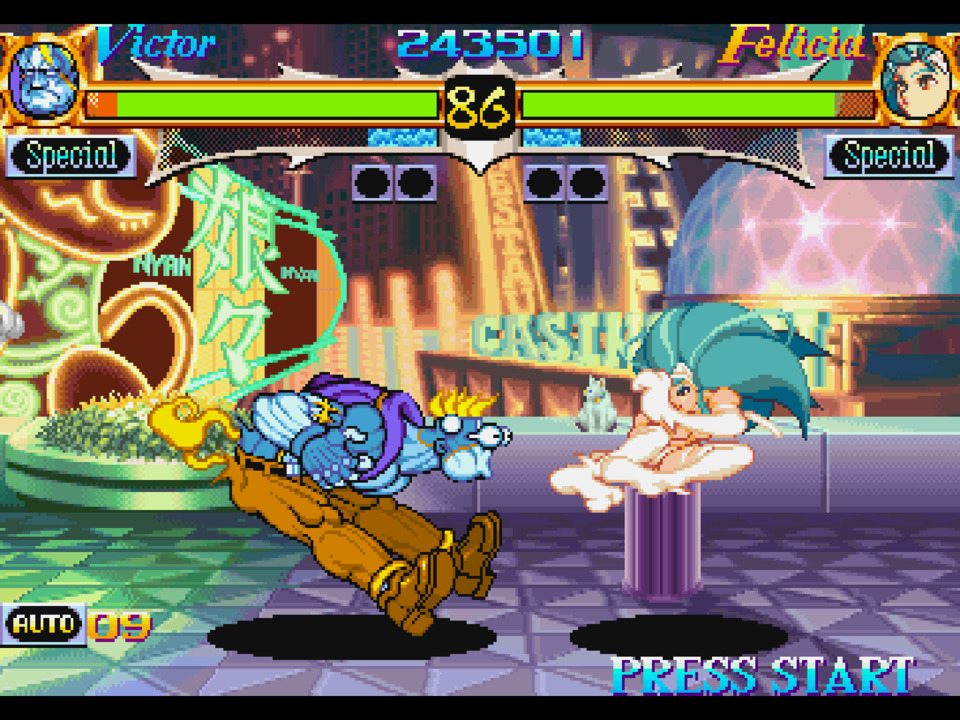
This game was apparently known in its time for the incredible number of animation frames for each character, and it shows. This thing looks like nothing else I've seen from the time, and I mean that in the best way possible. I get the sense, whether right or wrong, that this game was pushing Capcom's Street Fighter II engine to its limits. Combine that with the quality music and audio, and you have a game that is probably more fun to watch than play. That gets us to the main rub, this is a very basic conversion of the arcade game. None of the bells or whistles from the Street Fighter Alpha port are found here. You get the ladder, versus, and limited options. That's disappointing, as an on-ramp would have been greatly appreciated for finding a main from the relatively large cast of 14 characters. There's a whole multi-tiered special system that I never got close to doing anything with, and there isn't any way to learn outside of getting my ass handed to me in the ladder over and over again. The game gives you infinite continues and the option to change character between bouts of getting spanked, so it is possible to infinitely bash your face against the game. Even still, I ran out of patience by the time I got to the seventh fight in the ladder and tried out five or so characters.
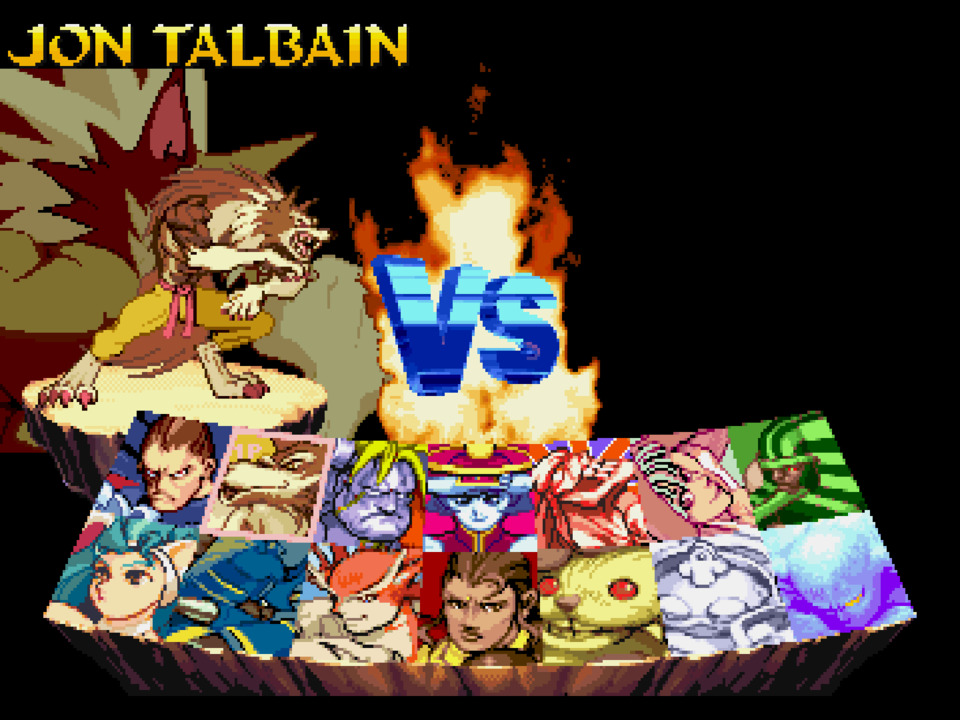
I don't really have a good handle on where Darkstalkers fits into the overall Fighting game genre. There seems to have only been something like three games in the mid-90's, but those keep getting rereleased in some form for the last three console cycles. So, there is an audience, but not enough of one to bring back the franchise for a fourth entry. You could probably do a lot with one of these using modern sprite technology, but I guess it isn't worth the effort. We're going to see the original Darkstalkers on the PS1 in a couple of months, so that'll give me some more time to think more about this.
----------------------------------------------------------------------------------------------------
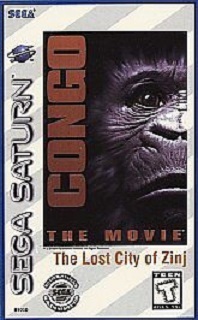
Congo: The Movie: The Lost City of Zinj
Developer: Jumpin' Jack Software
Publisher: Sega
Release Date: 3/31/1996
Time to Becoming The Endangered Species: 60 Minutes
We have finally reached the end of the month after a perilous journey involving a plane crash, jungle trek, and campy bullshit with our ASL gorilla friend. What did the Saturn have to offer as counterprogramming to Resident Evil? A First Person Shooter based on the frickin' Congo movie from the previous year, of course! Before seeing this game, a reasonable person would think that this is either a mundane Doom clone or some weirdly broken nonsense. In actual fact, it's both of those at the same time, like some kind of Schrödinger's Kusoge.
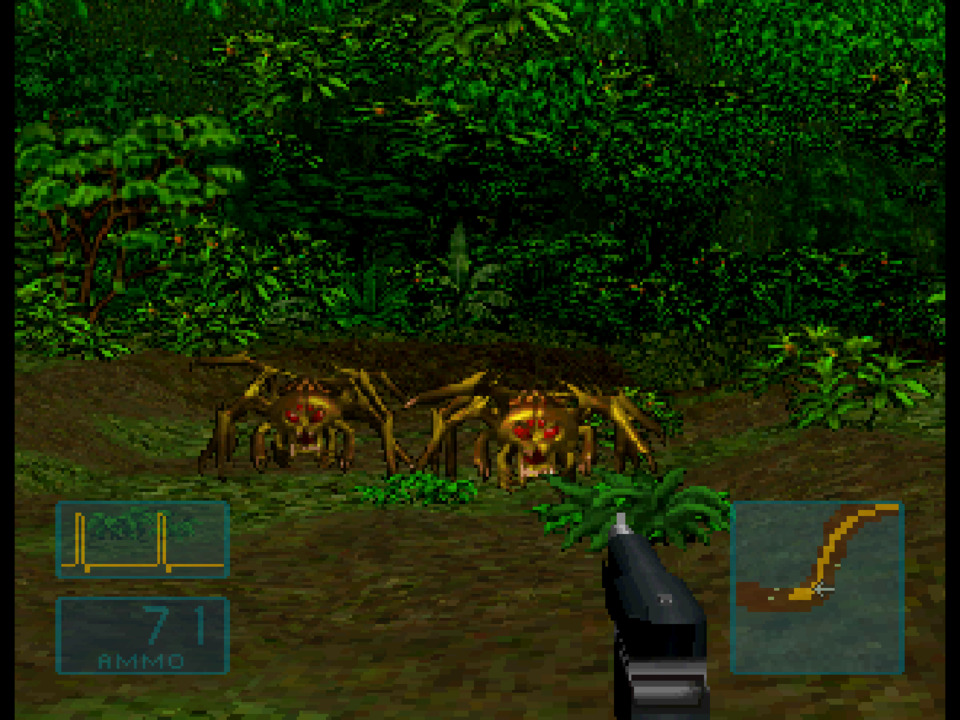
The plot here is a side story to the main narrative from the movie. We follow the survivor from the original expedition into the jungle looking for a fabled super special diamond mine. That mine is located in the Lost City of Zinj, if you couldn't guess from this game's title. Skipping right past all the neo-colonial everything with the setting of the movie, we're going to have to deal with a fictional species of hyperviolent gorillas protecting the ruined city for reasons that would be surprising if you've never read At the Mountains of Madness. For unexplained reasons, our FMV'd player character is determined to continue on to the mine in spite of the grisly deaths of his entire team. That leaves us going through 11 levels doing the whole one-man-army routine through a veritable horde of angry apes and other random nonsense.
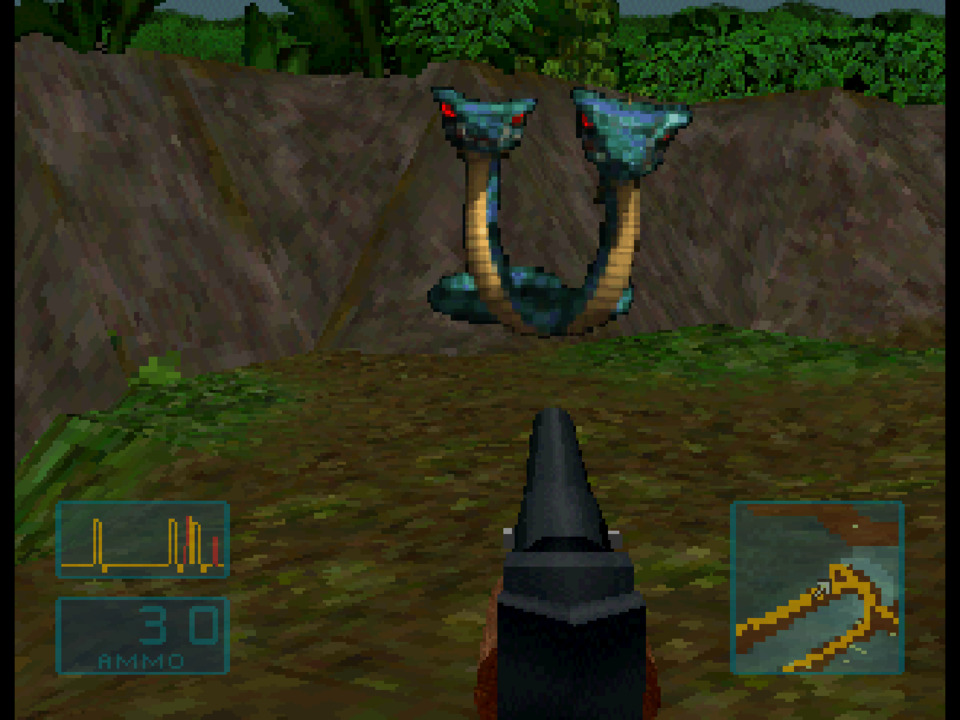
Like the slightly earlier Alien Trilogy, this is one of those shooters that was developed during that awkward period between the releases of Doom II and Quake. It plays largely as we would expect a console FPS to play from this period, and the few creative things Jumpin' Jack attempted to pull off are marred by the half-assed implementation of everything. The first half of the game is spent going through nondescript jungle levels and the back half through nondescript ruins and tunnels. The levels and sprites don't look particularly great, which really twists the knife on the fact that this thing runs so fucking bad you guys I mean holy crap. In my time, it felt like the framerate from second to second was being determined by a random number generator that only goes from 5 to 25. That chaotically slow rendering, combined with the awkward sprite rotation, kept me on the verge of nausea for almost my entire time playing this thing. As you can imagine, this doesn’t help the already awkward and sluggish controls. The basic act of interacting with this game is unpleasant.
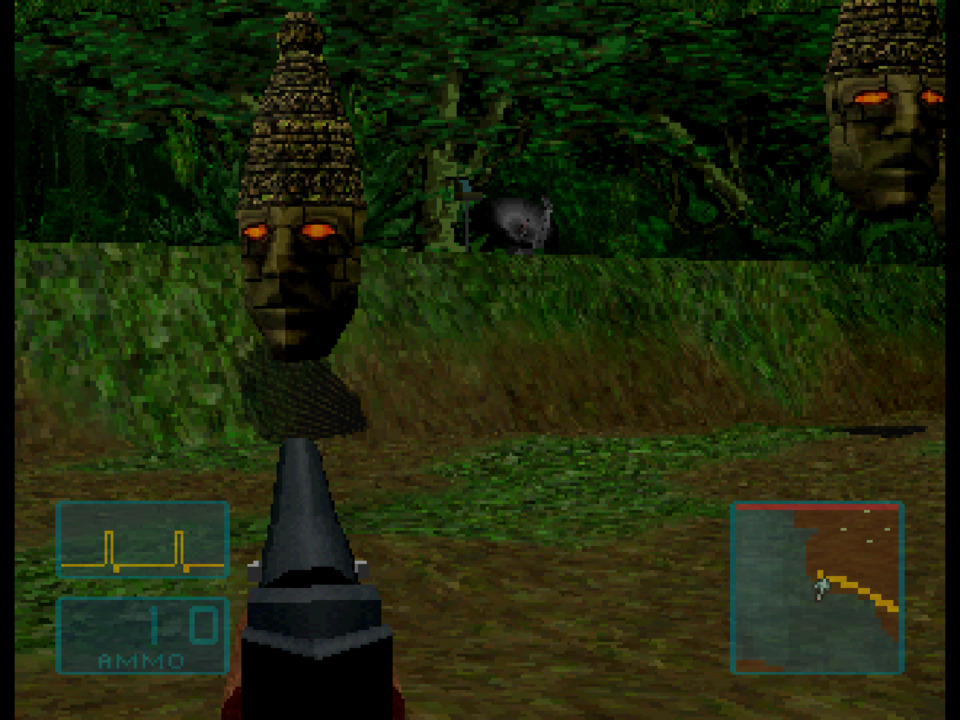
The low playability is really too bad, because if it ran better, I probably would have finished it. There isn't anything particularly special going on with the combat or encounter design, which "balances" otherwise low difficulty with getting merc'd by random enemy swarms. I did see a couple of interesting gimmicks that piqued my curiosity, however. First, there's a truly crappy poison effect that applies to one of the early levels which randomly reverses the movement controls while making the screen swimmy. It's a bad effect, but different for the time. Second, on the fifth level, which is the furthest one I reached, there's a weird mechanic where the level violently distorts in a severe sine wave pattern, I guess simulating an earthquake. This tosses you around in a way that is very different from your standard shooters of the time despite further aggravating any motion sickness. Also, the levels are physically uneven, with a lot of slopped surfaces and side paths accessible with a jump button. These gimmicks are just interesting enough by my standards, and maybe yours if you have an interest in old shooter fuckery.
This is apparently running off of the Ghen War engine, which is probably the reason for the environmental effects. I never would have guessed the Saturn to be the place for weird early FPS games. Regardless, reviewers at the time seem to have brushed this thing off out of hand for being crap, which is fair, and it almost immediately fell down the memory hole. I won't call this a hidden gem, but there is a dumb laser gun in the last level so who knows.
----------------------------------------------------------------------------------------------------
We've finally made it through the first three months of 1996 and we're still here. Things will get better from this point…they have to. Anyway, let's update the Ranking of All Saturn Games and move forward.
1. Panzer Dragoon
…
16. Night Warriors: Darkstalkers' Revenge
21. D
26. Winning Post
31. Congo: The Movie: The Lost City of Zinj
44. Battle Arena Toshinden Remix
51. Criticom
55. Revolution X
62. Magic Carpet
…
69. The Mansion of Hidden Souls
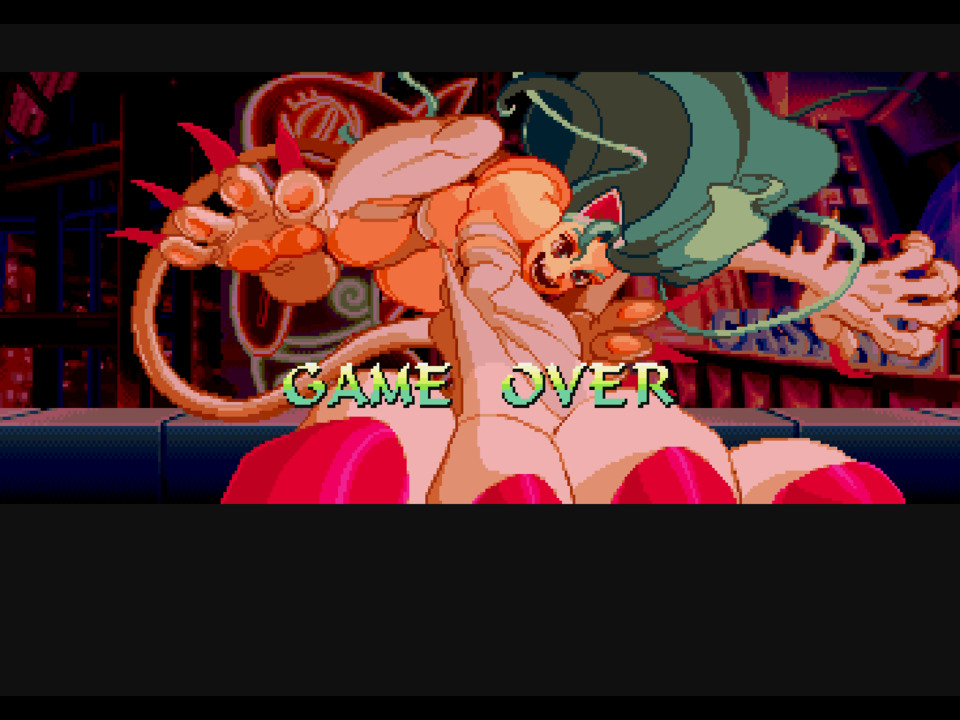
Now that we've seen everything the Saturn and Playstation had to offer in the first quarter of '96, it's time to move on to the logical next step of Q2. In April, May, and June of 1996, there were 24 releases for the PS1 and 27 for the Saturn. We're going to go through them in the same pattern as before, which means we will start next time with the first PS1 games of April: Bottom of the Ninth, PO'ed, Williams Arcade's Greatest Hits, and Return Fire. I say next time and not next week because I'm going to take another week off. So, we'll meet back here on 4/19 for Part 022 of All PS1 Games In Order.
Before that break and later this weekAfterwards, we're starting our journey into the 3DO's 1994 game catalog by looking at Total Eclipse, Microcosm, The Horde, Iron Angel of the Apocalypse, and MegaRace. I'm sure these are going to be great.
----------------------------------------------------------------------------------------------------
I streamed these games over on my Twitch channel at https://www.twitch.tv/fifthgenerationgaming. You can watch the archive below.

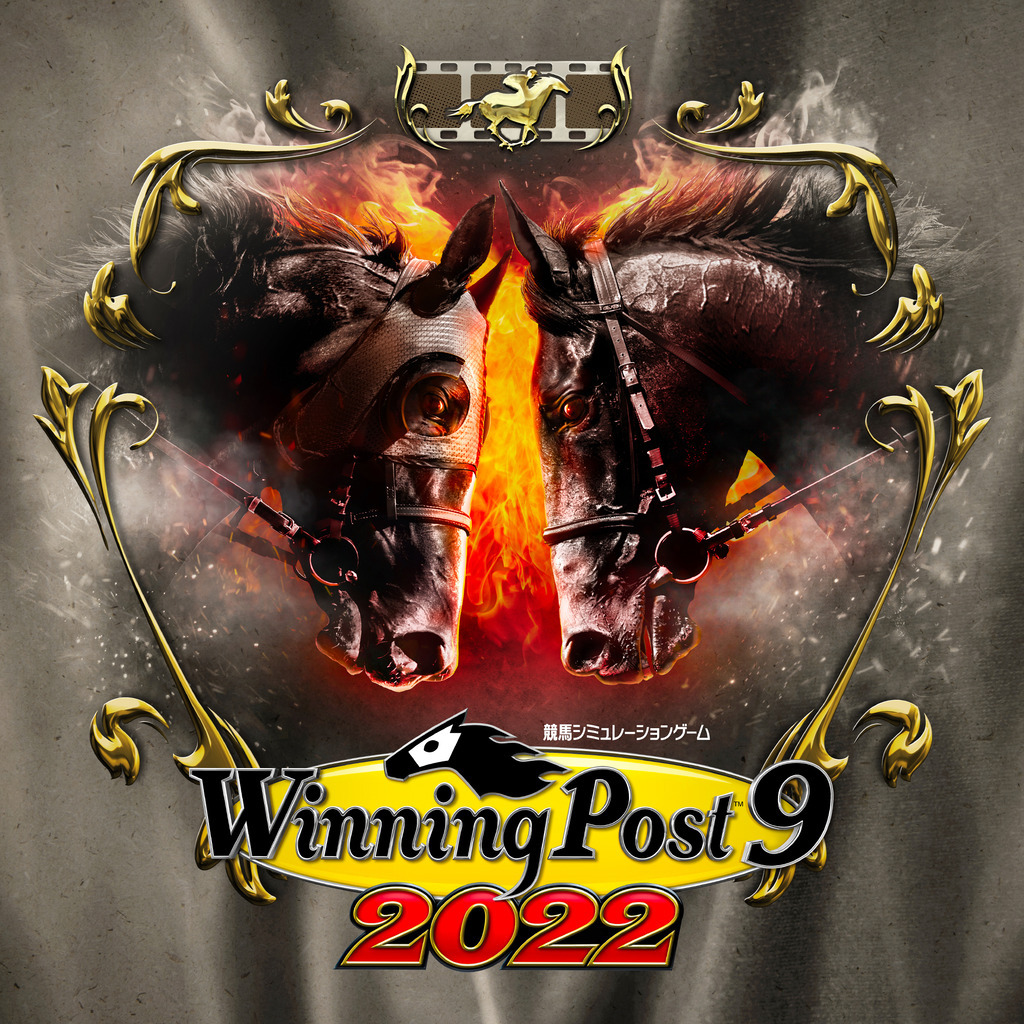

Log in to comment